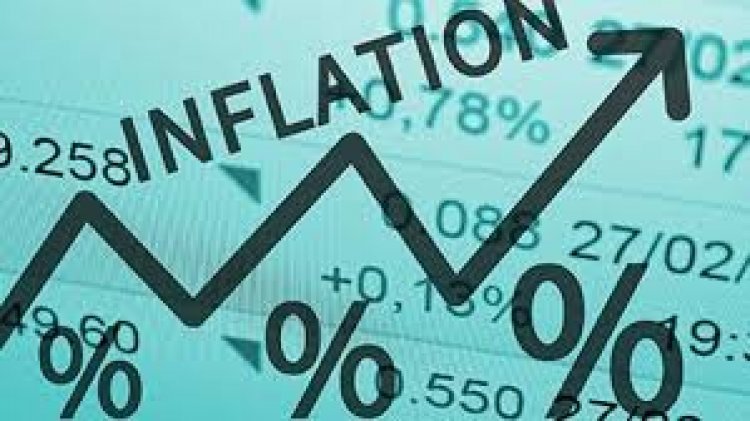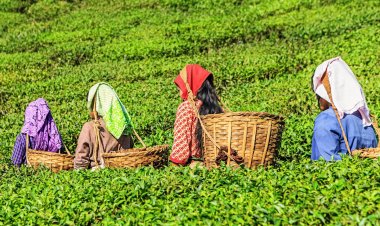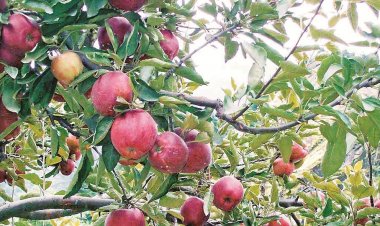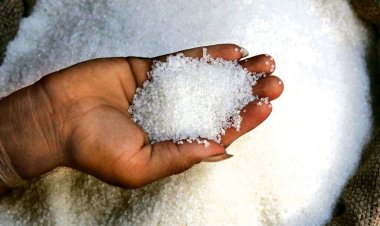Increasing inflation may aggravate farmers’ troubles; apprehensions of a fall in demand
While increasing inflation has created troubles on the economic front for the common man, it is being seen as a big cause of a fall in demand in the economy. This may lead to a fall in demand for agricultural products in the days to come and the farmers may have to bear the brunt of the loss. The fear of a fall in milk prices for the farmers has increased in some parts of the country.

It is after about a decade that the Wholesale Price Index (WPI) inflation rate has gone into double digits for two consecutive months. According to the data issued by the government on 14 June Monday, the WPI inflation rate was 12.94 per cent in May. In the previous month of April, the figure stood at 10.5 per cent. On the other hand, the Consumer Price Index (CPI) inflation rate, too, has reached 6.4 per cent in May, breaching the upper limit mandated by the Reserve Bank of India (RBI) monetary policy.
This unprecedented situation has given rise to worry of several kinds. While increasing inflation has created troubles on the economic front for the common man, it is being seen as a big cause of a fall in demand in the economy. This may lead to a fall in demand for agricultural products in the days to come and the farmers may have to bear the brunt of the loss. The dairy farmers have begun to face such a crisis. In many regions of the country, the farmers are getting the same milk prices as they got when lockdown had been imposed during the first wave of Covid-19. Besides, the figures for sugar and cereal prices are also pointing towards such a situation.
The government has mandated the RBI to keep the CPI at 4 per cent (+/–2 per cent). This has led the RBI to suggest to the government time and again not to go for a big increase in the Minimum Support Price (MSP) of crops so that the inflation target may be achieved. This mandate has been one of the primary reasons for the small increase in MSP for the last half a decade.
The biggest factors responsible for the May 2021 inflation rate are fuels — primarily petrol and diesel —, power, and manufacturing products. The fuel and power inflation has been 37.61 per cent while the inflation rate for manufacturing products has stood at 10.83 per cent and that for primary products at 9.61 per cent. It is apparent from this that the government’s decisions are the main reason for the highest-ever inflation rate for the base year 2011-12. The government may say that prices of petroleum products have been decontrolled, but it is its own steps of raising tax rates that have led to prices reaching their present high level. If one considers the price hike in crude oil in the global markets, one fails to see any option that could lead to a fall in prices other than the government reducing tax rates. In May 2021, the inflation rate for petrol has been 62.28 per cent, that for diesel 66.3 per cent and that for cooking gas 60.95 per cent. On the other hand, there has been a rise in prices of industrial products because commodity prices have gone up — iron 49.7 per cent, copper 24.1 per cent, lead 35.6 per cent and zinc 38.5 per cent. As far as food products are concerned, food crops, except pulses, have undergone deflation. Pulses have got dearer by 12.6 per cent in May. Over the last four months, the inflation in pulses has been in double digits despite the high base effect. The prices of fruits have gone up by 20.17 per cent while those of edible oils by 51.71 per cent.
As for retail inflation, it has gone up to 6.3 per cent in May from 4.2 per cent in April. Besides, it has reached this 83-month high despite the high base effect. Apart from fuels and transport, the major reasons for this high inflation level are edible oils (30.8 per cent) and pulses (9.3 per cent).
A higher inflation rate is bound to have an effect on demand. Agriculture experts believe that this may lead to the weakening of the demand for agricultural products. In an interview given to RuralVoice, RS Sodhi, Managing Director (MD), Amul, said, “The second wave of Covid-19 has had a greater impact on the demand front than the first. During the first wave, demand had started coming back to normal after the lockdown. Moreover, there had been no effect on products like milk and curd during the first wave. But demand is not picking up after the second wave. One of the reasons for this is the heavy expenditure people have incurred on health services. Also, they are hesitating to spend.”
Dairy experts say that the dairy farmers in Maharashtra are getting only Rs 18 to Rs 21 per litre because of a fall in demand. These prices had gone up to Rs 28 per litre before the advent of the second wave. In another development, Milma, the milk cooperative institution of Kerala, had recently reduced the purchase of milk in some parts of the state. When the farmers protested this, the government asked it to increase the purchase once again.
On the other hand, besides record production and record procurement of food grains, the government has decided to extend the facility of providing food grains under the Covid relief scheme up to November 2021. Thus, weak demand for these products is unlikely to lead to better prices. As far as edible oils are concerned, an increase in their prices did benefit the mustard farmers to some extent in that they got better prices. But the major reason for the price increase is that the imports have got dearer.
It will be significant to watch what steps the government and the RBI take, amidst these circumstances, to rein in inflation, because if deflation persists in the case of some agricultural products, it is the farmers who will find themselves on the receiving end.



 Join the RuralVoice whatsapp group
Join the RuralVoice whatsapp group








































